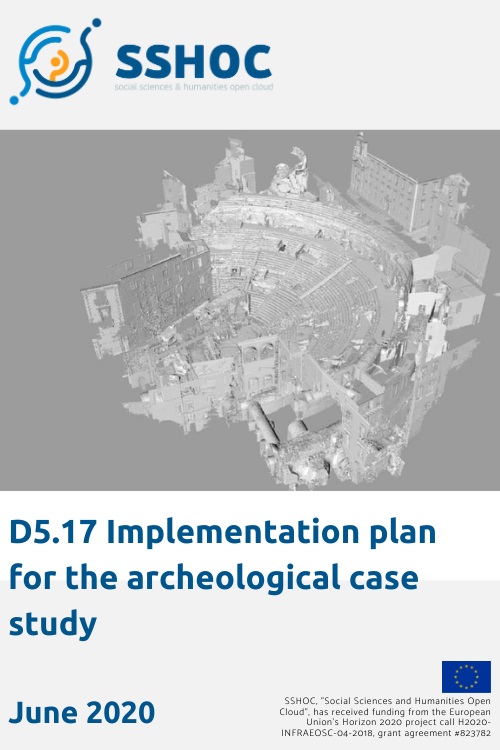
- Social Sciences & Humanities Open Cloud
D5.17 Implementation plan for the archeological case study

Submission date:
06 July 2020
In SSHOC Task 5.7 (Open Linked Data. Archaeology Case Study), a virtual reconstruction of the Roman theatre in Catania will be created as an example of an actual transition of archaeological data to the cloud, i.e. from data silos on individual computers to webservices. The case study is based on a unified workflow that starts with the archaeological documentation and results in a virtual reconstruction. With this workflow, data manually acquired during an excavation and traditionally stored on paper can now be stored in the cloud and used for 3D visualisations of the site.
The workflow uses tools that are being developed by the task partners, such as idai.field for exacavation documentation and the Extended Matrix for 3D reconstruction. The task partners will document the existing systems with their individual workflows and apply them to existing as well as newly created data on the Roman theatre. They will then work on combining these tools with the aim of creating an overarching cloud-based workflow.
The case study will rely on systems for normative data such as gazetteers for place and time information and based on the case study the task partners will evaluate additional data standardization strategies to enable data sharing and re-use of archaeological data. To this end, the underlying ontologies will be aligned with CIDOC CRM and provide the data as LOD wherever possible.
The present Deliverable 5.17 is the implementation plan for this case study. It details the necessary work steps, the planned collaborations and the expected outcomes of this task.
This deliverable has been accepted by the European Commission on - 03 November 2020
Publication type:
Deliverable
